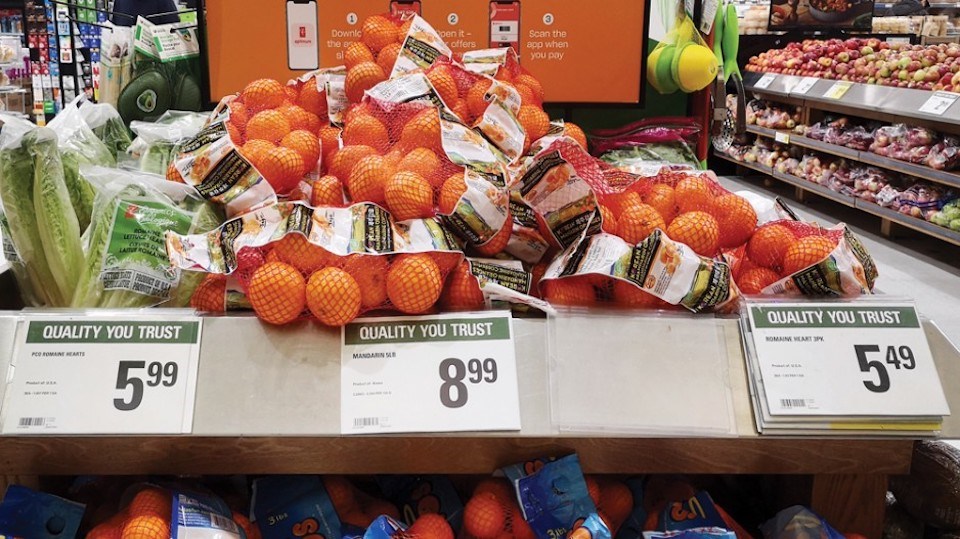Food prices increased by 7.7 per cent year over year in March – the highest annual rate of food inflation since March 2009, according to Statistics Canada.
Price hikes resulted from global supply-chain disruptions that increased input costs and shipping rates for growers and manufacturers. Those producers then passed those costs on to consumers to make their businesses viable.
Unfavourable growing conditions reduced farm output in parts of the world, leading to higher prices because there was less supply to meet steady demand.
Russia’s war on Ukraine disrupted some distribution channels. Many food products are seen as global commodities, where shortages in one region affect supply in other regions.
Market economics shift products to regions where people are willing to pay higher prices. If higher prices cannot be sustained in one area, products move to regions where consumers are able or willing to spend more money.
Years of near-zero interest rates and massive Canadian government spending to ease economic disruption prompted by the COVID-19 pandemic have kept home prices and stock markets elevated compared with pre-pandemic levels.
This created wealth for many Canadians, and enables consumers to pay more for food.
Meat
Prices for fresh or frozen beef increased 12.1 per cent in March compared with the same month in 2021, according to Statistics Canada.
COVID-19-related production plant shutdowns were to blame for part of that increase.
Little relief is expected for consumers.
Prices for fertilizer needed to grow grain to feed cattle were high before Russia’s invasion of Ukraine pushed those prices higher. Corn prices on April 18 hit a nine-year high above US$8 per bushel.
Bombing has disrupted Ukrainian grain shipments, while sanctions have kept Russian grain and fertilizer from world markets.
Poultry
Poultry prices rose 6.8 per cent year over year in March, according to Statistics Canada. Price hikes for chicken were slightly higher: 7.4 per cent in that same time period.
Poultry is supply-managed in Canada to stabilize prices, but grocers are still able to charge higher prices to meet consumer demand.
Dairy products
Prices for dairy products and eggs increased 8.5 per cent in March compared with the same month in 2021, according to Statistics Canada.
Within that category, butter prices jumped the most: up 16 per cent.
Dairy farmers are enduring higher prices to produce their products, and they are passing on those costs to grocers.
The Canadian Dairy Commission allowed farmers in the supply-managed milk sector to increase their prices by 8.4 per cent at the start of February.
So-called shrinkflation is happening at dairy giant Saputo (TSX:SAP) where the company has started to sell cream in 946-millilitre containers, down from what had been one-litre cartons.
Fruit
Fresh fruit prices were up nine per cent in March compared with a year earlier.
John Anderson, CEO of Coquitlam-based Oppenheimer Group, told BIV that produce prices flow with global demand.
Some good news is that Russia does not export much fruit or vegetables. Argentina and Chile export many products to Russia. If sanctions cancel those shipments, those products – grapes, stone fruit and citrus fruit – would be available on the world market, thereby bringing prices down, Anderson said.
Vegetables
Fresh vegetable prices increased by 4.6 per cent in March compared with a year earlier.
Higher prices for produce vegetables come from increased input costs such as fertilizer and labour.
Oil prices were recently higher than they had been since mid-2009. That increases shipping costs.
W&A Farms co-owner Bill Zylmans told BIV that he uses gasoline and diesel fuel in farm equipment to plant and harvest potatoes, cauliflower, carrots and other crops. He also delivers some products to wholesalers by truck.
Packaged foods
Price increases for packaged foods have followed the overall inflationary trend. Prices for sugar, chocolate, oil, coffee, spices and other products increased nine per cent in March compared with the same month a year ago, according to Statistics Canada.
Increases in the price of raw materials as well as packaging have prompted 小蓝视频 manufacturers, such as Purdys, to raise prices.
Hedging prices can sometimes slow the rise of prices, but Purdys CEO Lawrence Eade told BIV that shipping expenses have been the company’s biggest recent cost increase. •




